How a Spike in Cancer Deaths Triggered a Life-Saving Partnership
Prostate cancer screenings among Black men have tripled at some SF health providers as part of this UCSF-City of San Francisco project that’s paving the way for statewide changes.
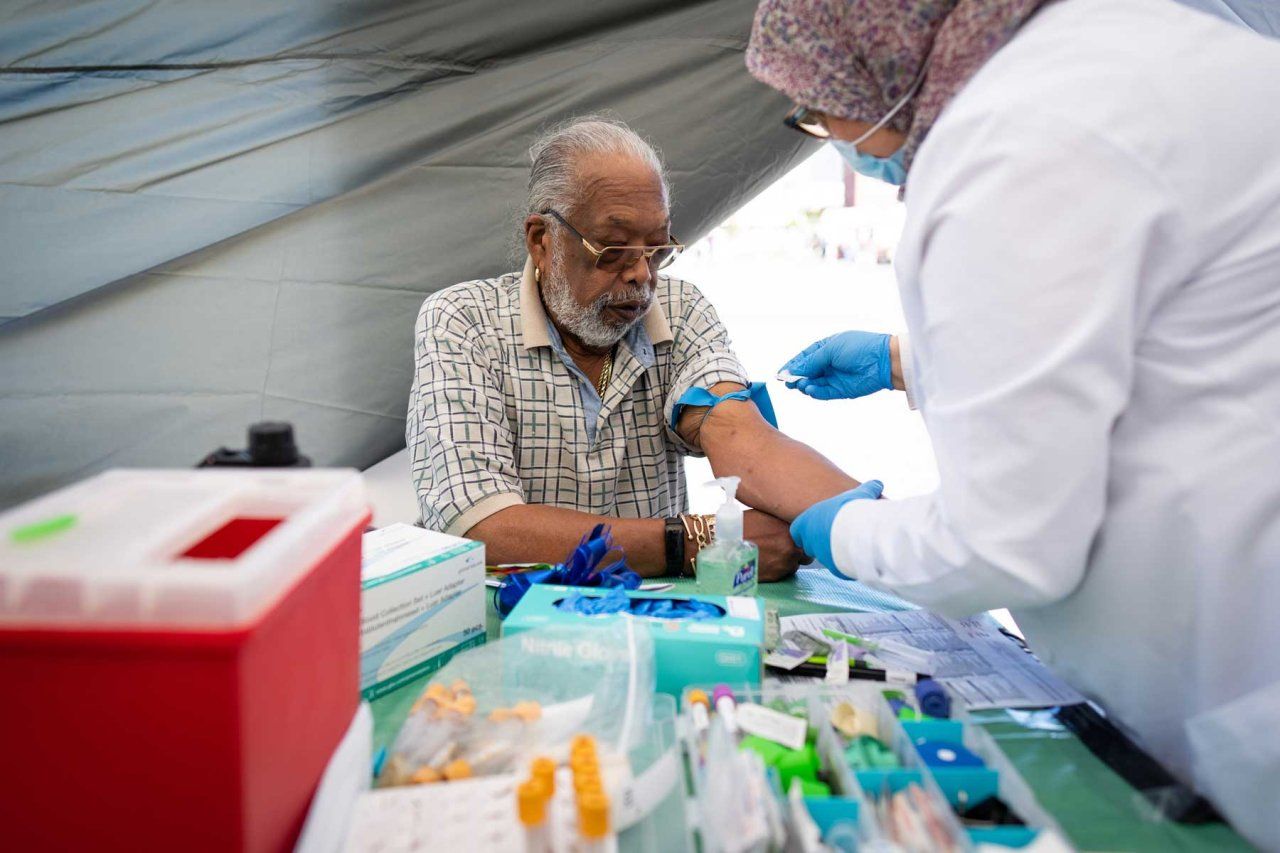
“Later,” James McCray Jr. told himself, he’d deal with it later.
McCray was the long-time pastor of Jones Memorial United Methodist Church, located just blocks away from UCSF Medical Center at Mount Zion. In fact, early in his tenure, McCray partnered with the medical center’s doctors to conduct health education among the congregation.
In 2004, Mount Zion doctors conducted prostate cancer screenings at the chapel.
“The church’s health ministry had publicized everywhere that Dr. McCray was going to lead us in the digital examination for cancer,” remembers McCray.
“Well,” he says, laughing, “I soon found out that ‘digital’ was not what I thought it was.”
As part of a digital rectal exam, a physician feels the back wall of the prostate gland for swelling, tenderness and lumps that could be signs of cancer. McCray’s exam revealed his prostate was swollen, and doctors urged him to go to his medical provider for more tests.
“I said, ‘Yeah, okay – when I get back from vacation.’”
Looking back now, he adds. “You should never do that.”
Prostate cancer kills more than twice as many Black men
Nationally, 1 in 8 men will be diagnosed with prostate cancer during their lifetime. Most will survive. But Black men are more likely to be diagnosed with the cancer and more than twice as likely to die from it than their white peers, explains UC San Francisco Associate Professor, Medicine Nynikka Palmer, DrPH, MPH.
This is why Black men should start getting screened for prostate cancer between the ages of 40 and 45 with prostate-specific antigen (PSA) blood tests. Based on initial results, men and physicians should discuss how frequently to repeat the test in the future.
Prostate cancer mortality rate per 100,000 in the Greater Bay Area, 2017 - 2021
*Greater Bay Area counties include: Alameda, Contra Costa, Marin, Monterey, San Benito, San Francisco, San Mateo, Santa Clara, Santa Cruz
For Non-Hispanic Black men, the mortality rates are as follow. 2017: 38.2; 2018: 38.5; 2019: 38.8; 2020: 42.9; 2021: 42.5. For non-Hispanic white men, the mortality rates are as follow. 2017: 18.4; 2018: 20; 2019: 17.9; 2020: 18.6; 2021: 17.8. For Hispanic men, the mortality rates are as follow. 2017: 18.3; 2018: 16.4; 2019: 19.9; 2020: 17.4; 2021: 18.8. For Asian American/Pacific Islander men, the mortality rates are as follow. 2017: 8.7; 2018: 10.8; 2019: 8.5; 2020: 9.3; 2021: 8.6.
Prostate cancer mortality rate per 100,000 in the Greater Bay Area, 2017 - 2021
*Greater Bay Area counties include: Alameda, Contra Costa, Marin, Monterey, San Benito, San Francisco, San Mateo, Santa Clara, Santa Cruz
For Non-Hispanic Black men, the mortality rates are as follow. 2017: 38.2; 2018: 38.5; 2019: 38.8; 2020: 42.9; 2021: 42.5. For non-Hispanic white men, the mortality rates are as follow. 2017: 18.4; 2018: 20; 2019: 17.9; 2020: 18.6; 2021: 17.8. For Hispanic men, the mortality rates are as follow. 2017: 18.3; 2018: 16.4; 2019: 19.9; 2020: 17.4; 2021: 18.8. For Asian American/Pacific Islander men, the mortality rates are as follow. 2017: 8.7; 2018: 10.8; 2019: 8.5; 2020: 9.3; 2021: 8.6.
“Prostate cancer actually has a very high survival rate,” she says. “Partly because it’s a slow-growing disease, but partly because if you get the care that’s needed, you can usually avoid dying of it. So when I hear about deaths in my own community, in the communities that I work in, it’s frustrating because most of the time, they didn’t have to happen.”
By 2014, prostate cancer was among five cancers that made up nearly half of all cancer diagnoses and deaths in San Francisco, alongside breast, colorectal, liver and those related to tobacco use. And death rates among the city’s Black men were roughly five times higher than some communities.
To turn the tide, UCSF’s Helen Diller Family Comprehensive Cancer Center founded the San Francisco Cancer Initiative (SF CAN) in 2016. The initiative uses data from sources like the Greater Bay Area Cancer Register, housed at UCSF, to create tailored cancer prevention and screening strategies at the neighborhood level. The strategies are carried out by SF CAN’s five task teams, each dedicated to one of the city’s five high-burden cancers – which each team conducting outreach and advocacy.
SF CAN is the first comprehensive, citywide plan to tackle multiple forms of cancer through collective action in the U.S.
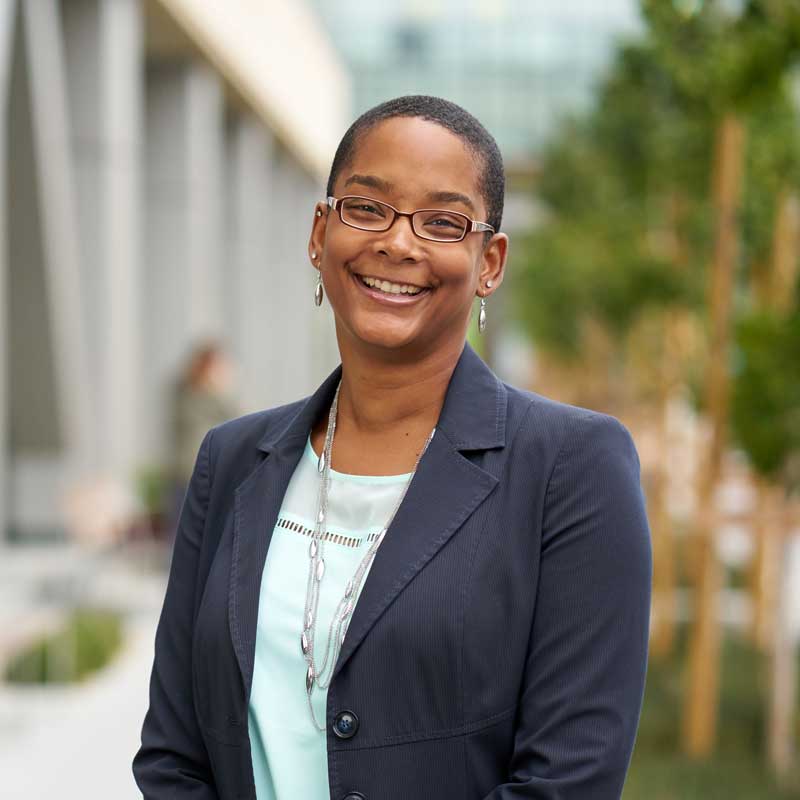
“The most rewarding part of this is that we’re starting to see things change bit by bit.”
Nynikka Palmer, DrPH, MPH
Prostate cancer screenings triple in some SF hospitals
Today, Palmer leads SF CAN’s prostate cancer task team, bringing together city officials, health care providers and community organizations, particularly from the city’s Black churches, to increase awareness about prostate cancer.
The task team has managed to leverage decades of UCSF’s work with Black faith leaders in San Francisco to create a network of community champions who drive screening campaigns and manage a support group for Black men to help them navigate diagnosis and treatment. This support group is among the very few in the country tailored for Black men living with prostate cancer.
UCSF rallies to stop prostate cancer
Left: UCSF Assistant professor of Urology Samuel Washington, MD, MAS at the 2022 UCSF SF Can Blue Ribbon Car Show event, where attendees were informed about prostate cancer and invited get a free prostate specific antigen (PSA) test.
Right: Joseph Egbunikeokye, Project Manager at UCSF, organized the 2022 event.
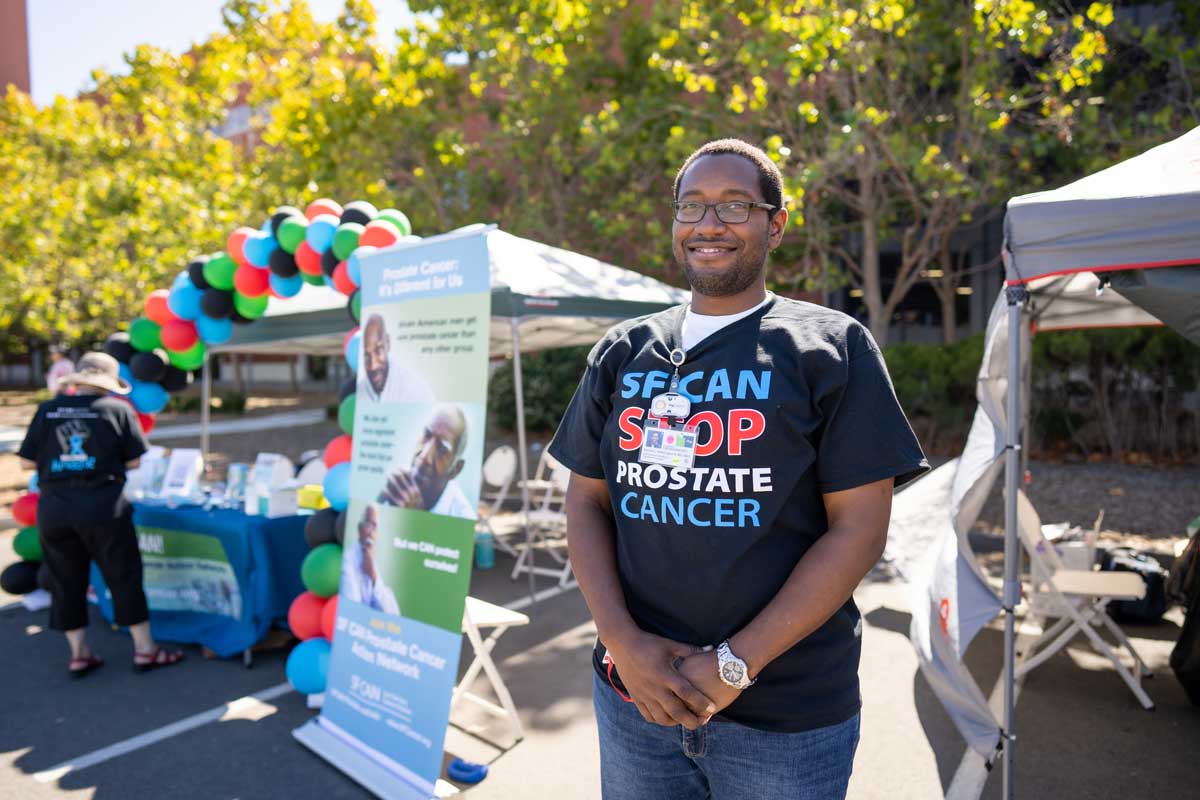
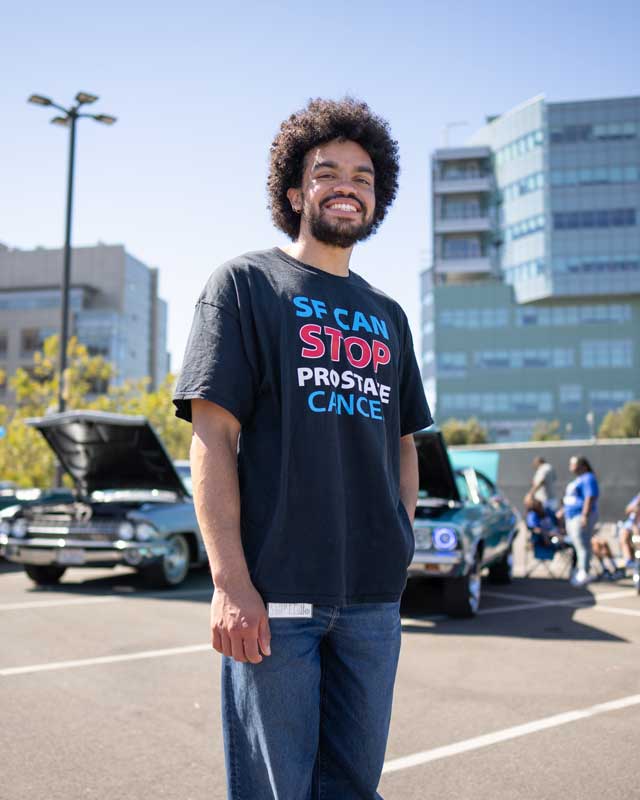
UCSF rallies to stop prostate cancer
Below: UCSF Assistant professor of Urology Samuel Washington, MD, MAS at the 2022 UCSF SF Can Blue Ribbon Car Show event, where attendees were informed about prostate cancer and invited get a free prostate specific antigen (PSA) test.

Below: Joseph Egbunikeokye, Project Manager at UCSF, organized the 2022 event.

At the same time, Palmer’s team has conducted outreach to other medical providers, sharing best practices on screening that led some large health care providers in the city to triple the number of Black men being tested for prostate cancer. UCSF researchers have also worked to develop better screening models, challenging conventional wisdom. These models have shaped California’s prostate cancer plan, setting the stage for many more lives to be saved.
“One of the reasons I became ‘doctor’ Palmer and that I wanted to focus on prostate cancer is because I really felt that we needed to change our health care systems and how we provide care to patients, particularly those most burdened by disease,” explains Palmer, who has devoted much of her career to researching prostate cancer among Black men. “The most rewarding part of this is that we’re starting to see things change bit by bit.”
‘Those two happenings helped save my life’
A car accident soon after his vacation landed McCray in the hospital before he’d followed up on his prostate exam results. Routine bloodwork soon hinted that McCray might have cancer, but doctors could not determine the source – until they checked his file.
“Because UCSF had done the screening at my church and found my prostate was swollen and the screening result had gone into my file, the doctors tested me for prostate cancer,” McCray says. “Those two happenings contributed to the saving of my life on the earthly side.”
The prognosis was grim, doctors warned McCray, but immediate surgery might buy him another five years. Unsure, he rang former UCSF Executive Vice Chancellor and Provost Eugene Washington, MD, who happened to be a member of his congregation. Washington listened attentively, McCray remembers, before telling him to hold on as he rang UCSF Health radiation oncologist Mack Roach III, M.D., F.A.C.R. Roach is also a professor of radiation oncology at UCSF.
Washington phoned back: Surgery wasn’t McCray’s only option and soon he was transferred to UCSF’s Mount Zion Medical Center, where he underwent brachytherapy. As part of the treatment, radioactive beads were placed into his prostate. There, the kernels acted as radiation guides, directing it towards the cancer and sparing nearby healthy tissue. The treatment’s precision allowed doctors to use higher levels of radiation, making it quicker than traditional forms.
Black men aren’t always given all their options
Twenty years later, McCray, now the executive director of the Tabernacle Community Development Corporation for affordable housing, has become one of SF CAN’s most vocal community proponents of prostate cancer screening and care – aka one of SF CAN’s “wellness warriors.” For McCray, SF CAN is the next chapter in the partnership with UCSF that he helped foster decades ago.
“It’s been vital to institutionalizing the community outreach, getting the community doing it and that’s what’s going to last because pastors can come and go,” he says.
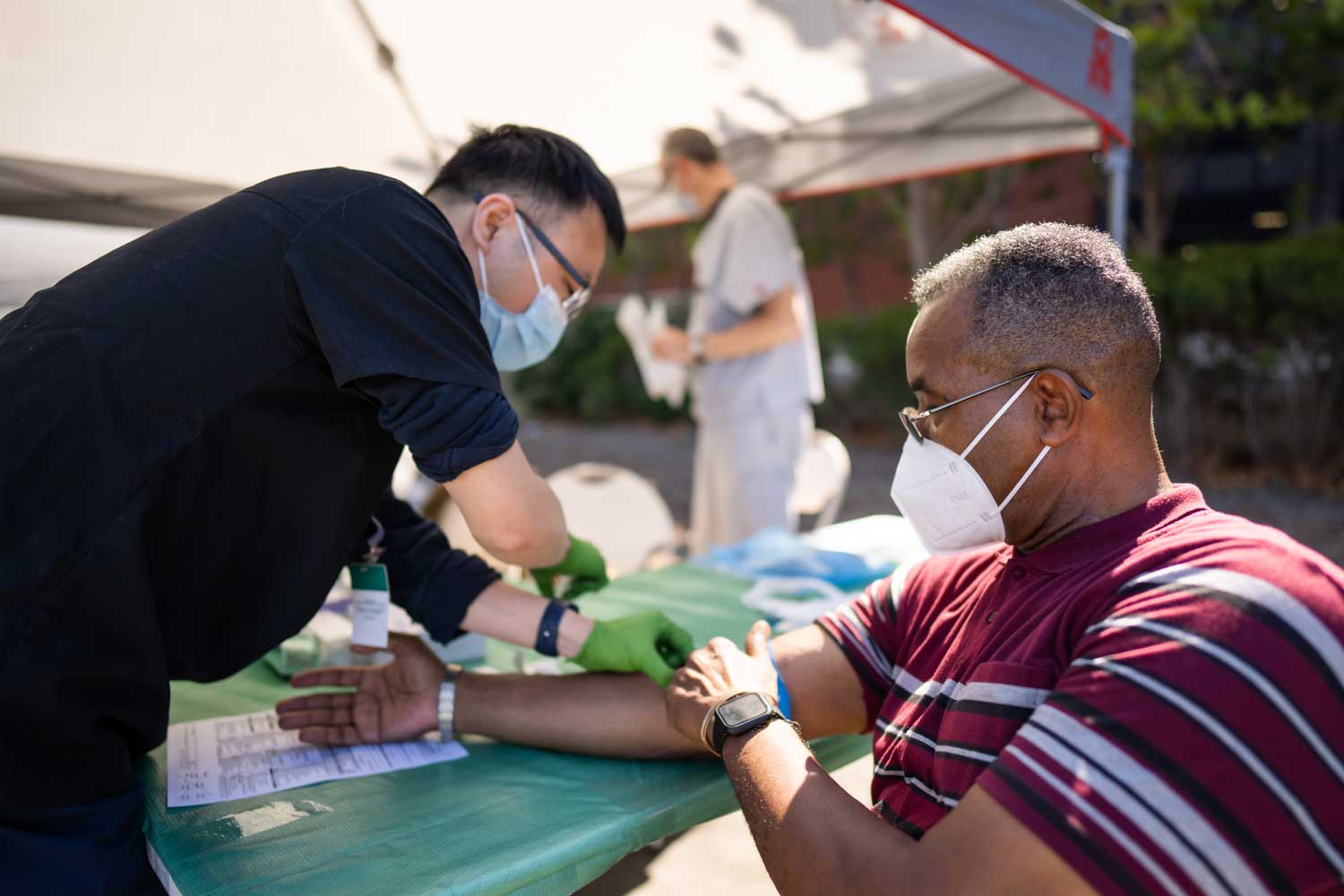
But McCray’s story is also emblematic of many of the disparities in prostate testing and treatment that fuel higher death rates among Black men.
“Medicine isn’t exactly sure why Black men are developing more prostate cancer. There might be some genetic component, but that doesn’t explain all of it,” Palmer says. “Black men are less likely to be part of prostate cancer research. They’re also less likely to be screened and, because of that, are more likely to be diagnosed at a later stage, which is contributing to the higher death rates.”
She adds: “Once they’re diagnosed, they’re less likely to get appropriate care in line with the latest guidelines.”
McCray does outreach to men, checking on those who are newly diagnosed and encouraging others to get screened or seek treatment. Many men are concerned about the time treatment will take, taking time off and whether it will be worth it in the long term, he says.
“They think, ‘Hey, I made it past the first hump. I lived past 25, I didn’t get shot, I didn’t get killed. I made it through high school; but I’m not expected to be around much longer, so I’m not going to go through a long treatment,” he says. “I tell them, ‘You need to go through it, because we’re dependent on you too. Your grandchildren need to come sit on your lap.”
“I get to see my great-grandson, the third born,” McCray says. “That’s why you go through this.”